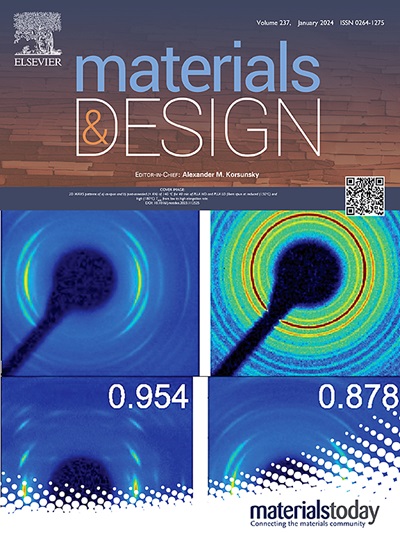Conditional generative AI for high-fidelity synthesis of hydrating cementitious microstructures
IF 7.9
2区 材料科学
Q1 MATERIALS SCIENCE, MULTIDISCIPLINARY
引用次数: 0
Abstract
Portland cement paste has a highly heterogenous evolving microstructure that complicates the development of stronger and greener cementitious materials. Microstructure is the fundamental input of multiscale studies on material behaviors. Herein, we propose a conditional generative AI framework for synthesizing high-fidelity 3D microstructures of hydrating cement paste (1–28 days) with varying water-to-cement ratios and Blaine fineness values. A latent diffusion transformer, operating within a compact two-stage latent space derived via a vector quantized variational autoencoder, efficiently captures and reproduces experimentally measured microstructural patterns. Statistical analyses confirm strong consistency in grey value distributions, micromechanical properties, hydration phase evolution, and particle size distributions, with only minor boundary-related discrepancies. Validation using a pretrained classifier further corroborates the fidelity of generated microstructures. This approach provides a robust tool for realistic cement paste microstructure generation, supporting multiscale modeling and advancing the design of sustainable cementitious materials.

高保真水化胶凝微观结构合成的条件生成人工智能
波特兰水泥膏体具有高度不均匀的微观结构,这使得开发更强、更环保的水泥材料变得复杂。微观结构是材料行为多尺度研究的基本输入。在此,我们提出了一个条件生成AI框架,用于合成具有不同水灰比和Blaine细度值的水化水泥浆体(1-28天)的高保真三维微观结构。潜伏扩散变压器,在一个紧凑的两级潜伏空间中工作,通过矢量量化变分自编码器推导,有效地捕获和再现实验测量的微观结构模式。统计分析证实灰值分布、微观力学性能、水化相演化和粒度分布具有很强的一致性,只有较小的边界相关差异。使用预训练分类器的验证进一步证实了生成的微结构的保真度。该方法为现实水泥浆微观结构生成提供了一个强大的工具,支持多尺度建模和推进可持续胶凝材料的设计。
本文章由计算机程序翻译,如有差异,请以英文原文为准。
求助全文
约1分钟内获得全文
求助全文
来源期刊

Materials & Design
Engineering-Mechanical Engineering
CiteScore
14.30
自引率
7.10%
发文量
1028
审稿时长
85 days
期刊介绍:
Materials and Design is a multi-disciplinary journal that publishes original research reports, review articles, and express communications. The journal focuses on studying the structure and properties of inorganic and organic materials, advancements in synthesis, processing, characterization, and testing, the design of materials and engineering systems, and their applications in technology. It aims to bring together various aspects of materials science, engineering, physics, and chemistry.
The journal explores themes ranging from materials to design and aims to reveal the connections between natural and artificial materials, as well as experiment and modeling. Manuscripts submitted to Materials and Design should contain elements of discovery and surprise, as they often contribute new insights into the architecture and function of matter.
 求助内容:
求助内容: 应助结果提醒方式:
应助结果提醒方式:


